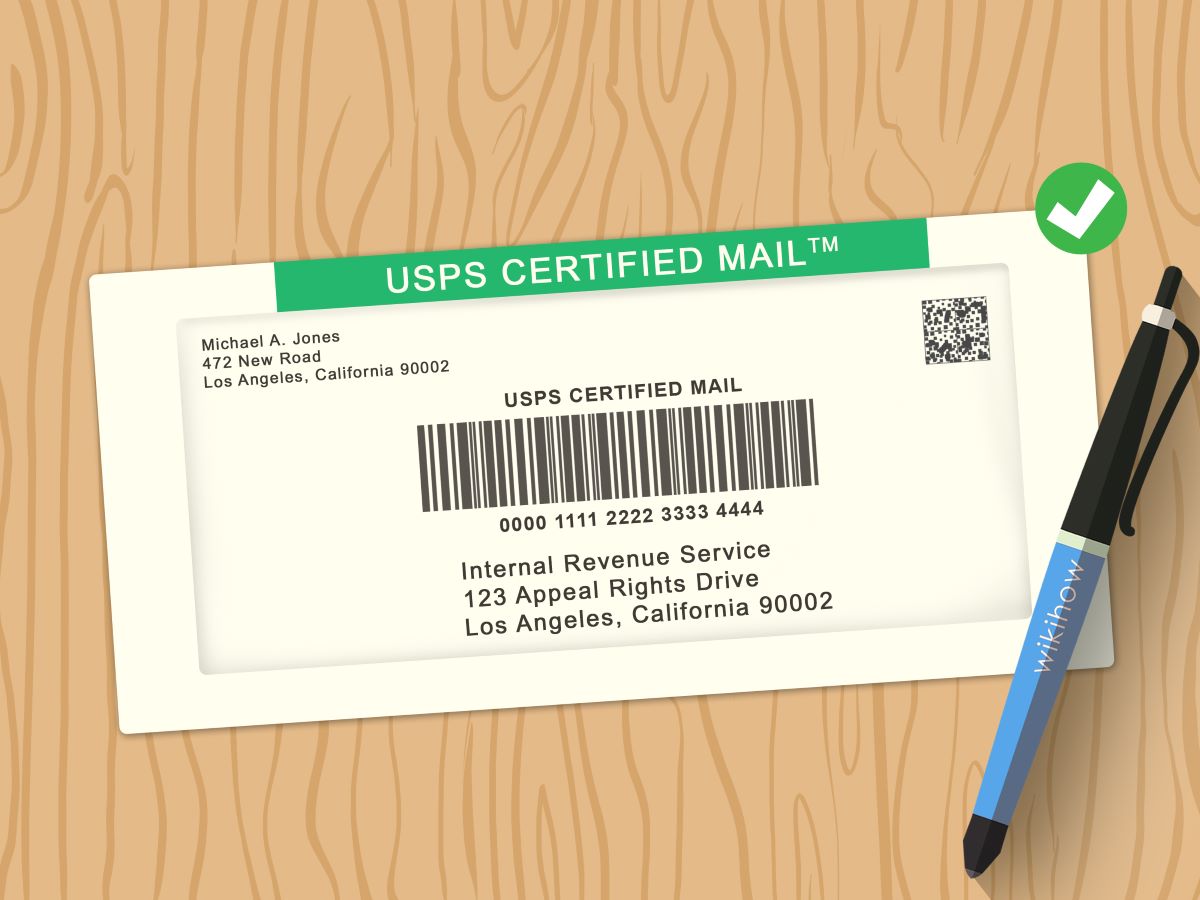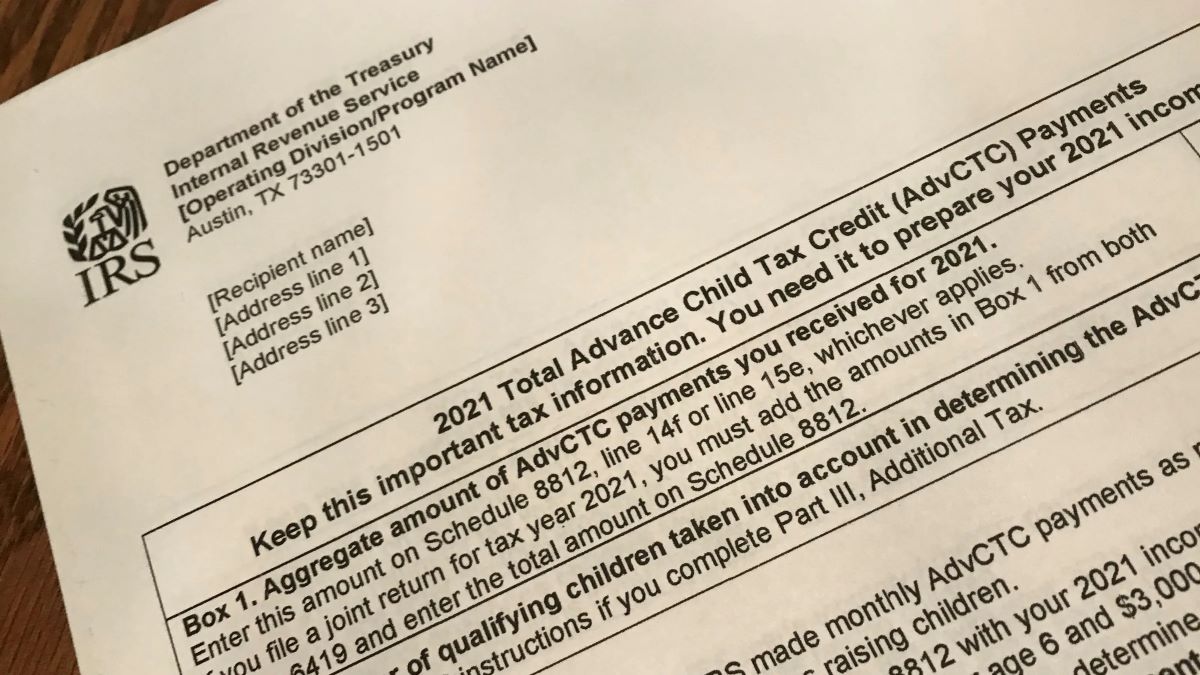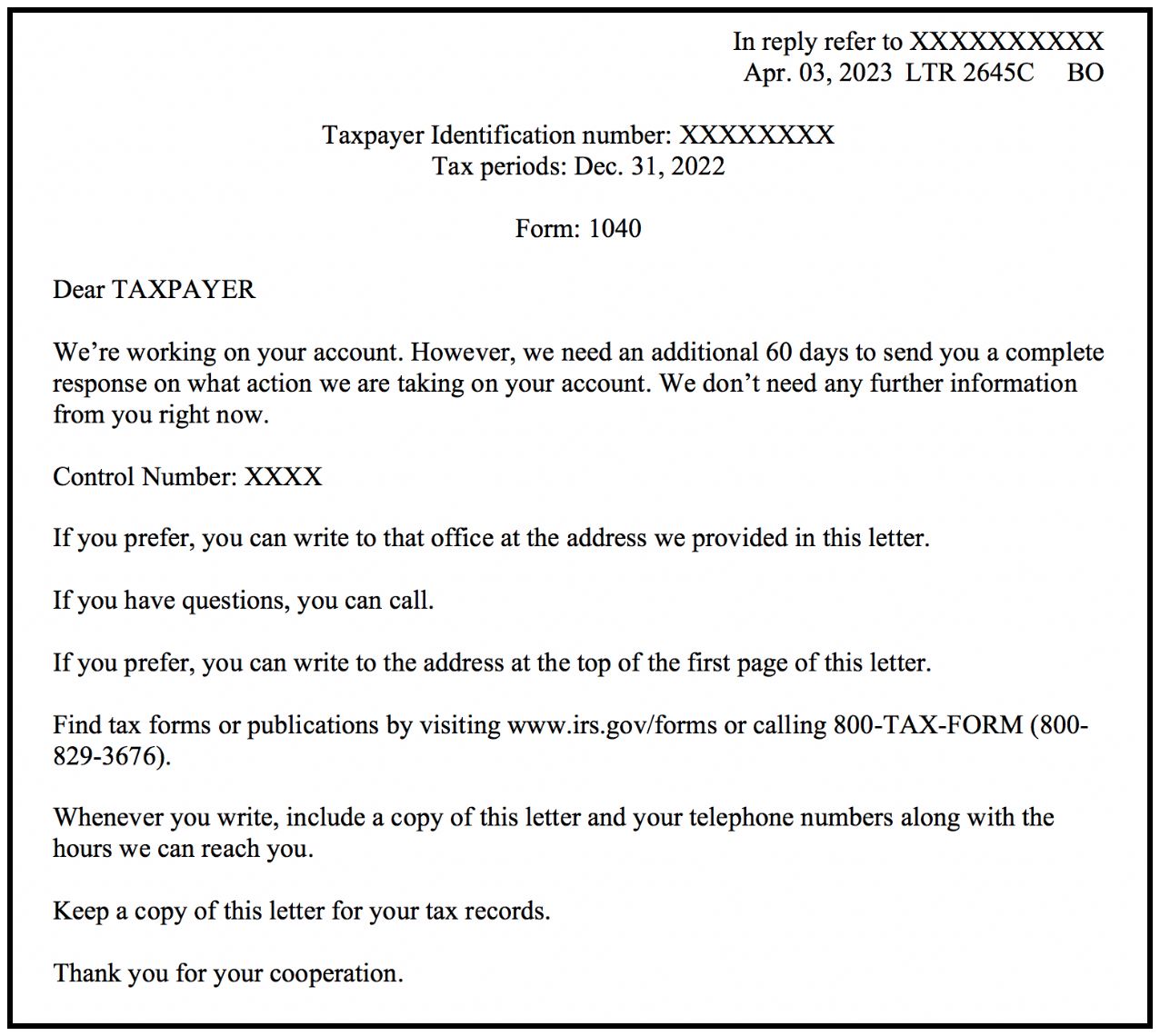

Finance
How To Write A Disagreement Letter To The IRS
Published: October 31, 2023
Learn how to effectively write a disagreement letter to the IRS and handle finance-related issues. Enhance your financial knowledge and address IRS concerns with confidence.
(Many of the links in this article redirect to a specific reviewed product. Your purchase of these products through affiliate links helps to generate commission for LiveWell, at no extra cost. Learn more)
Table of Contents
- Introduction
- Step 1: Gather Necessary Information
- Step 2: Format the Letter
- Step 3: Begin with a Polite and Respectful Tone
- Step 4: Clearly State the Relevant Facts and Disagreements
- Step 5: Provide Supporting Documentation
- Step 6: Suggest a Resolution or Alternative Solution
- Step 7: Request a Response or Meeting
- Step 8: Proofread and Edit the Letter
- Conclusion
Introduction
Dealing with the Internal Revenue Service (IRS) can be a daunting and intimidating task. Whether you are disputing a tax assessment, challenging a penalty, or disagreeing with the outcome of an audit, it is crucial to effectively communicate your concerns to the IRS in writing. One of the most effective ways to do this is by writing a disagreement letter.
A well-crafted disagreement letter can help you convey your points clearly and concisely, providing the IRS with the necessary information to re-evaluate your case. It is important to approach this letter with a calm and professional tone, avoiding any confrontational language. By following a structured approach and including the essential elements, you can increase your chances of reaching a resolution that is favorable to you.
In this article, we will guide you through the process of writing a disagreement letter to the IRS. We will provide step-by-step instructions, highlighting key tips and suggestions along the way. By the end of this article, you will have the knowledge and confidence to craft an effective disagreement letter that maximizes your chances of a successful outcome.
Step 1: Gather Necessary Information
Before you start writing your disagreement letter to the IRS, it is essential to gather all the necessary information related to your case. This will help you provide accurate and relevant details in your letter. Here are a few key points to consider in this step:
- Review Your IRS Correspondence: Carefully go through any letters or notices you have received from the IRS regarding your dispute. Understand the specific issues they have raised and the basis for their decision.
- Collect Supporting Documents: Gather all the relevant documents that can support your disagreement. This may include tax returns, receipts, bank statements, contracts, or any other evidence that can strengthen your claims.
- Keep Track of Deadlines: Note any deadlines mentioned in the IRS correspondence. It is crucial to submit your disagreement letter within the specified timeframe to ensure it is considered by the IRS.
- Research Tax Laws and Regulations: Familiarize yourself with the applicable tax laws and regulations related to your dispute. This will help you understand the legal basis for your disagreements and strengthen your arguments.
By taking the time to gather all the necessary information, you can ensure that your disagreement letter is well-informed and based on facts. This step will also help you identify any gaps in your documentation that need to be addressed before submitting your letter.
Step 2: Format the Letter
Formatting your disagreement letter in a clear and organized manner is crucial to ensure that your points are effectively conveyed to the IRS. Here are some key tips to consider when formatting your letter:
- Use a Professional Tone: Maintain a polite and respectful tone throughout the letter, even if you strongly disagree with the IRS’s decision. Remember, the goal is to present your case in a professional manner.
- Include Your Contact Information: At the top of the letter, provide your full name, address, phone number, and email address. This allows the IRS to easily reach out to you for further clarification.
- Include the Date: Add the current date below your contact information to establish a reference point for future communication.
- Add the IRS Contact Information: Below the date, include the name and address of the specific IRS representative or office you are addressing. This information can be found in the IRS correspondence you received.
- Use a Formal Salutation: Begin the letter with a formal salutation, addressing the IRS representative or office by their title and last name (e.g., “Dear Mr. Smith” or “Dear Office of Appeals”).
- Use Clear and Concise Language: Write in a clear and concise manner, using simple language that is easy for the reader to understand. Avoid using technical jargon or complex terminology.
- Organize Your Letter into Sections: Divide your letter into sections or paragraphs to address each point separately. This helps the reader follow your arguments and makes your letter easier to read.
- Use Bullet Points or Numbered Lists: When presenting multiple points or supporting evidence, consider using bullet points or numbered lists. This helps to emphasize key arguments and makes the information more visually appealing.
- End with a Formal Closing: Close your letter with a professional and formal closing, such as “Sincerely” or “Yours faithfully.” Sign the letter below the closing with your full name and include any relevant titles or designations.
By following these formatting tips, you can create a well-structured and visually appealing disagreement letter that is easy for the IRS to read and understand. This will help increase the chances of your arguments being considered and evaluated effectively.
Step 3: Begin with a Polite and Respectful Tone
When writing a disagreement letter to the IRS, it is important to maintain a polite and respectful tone from the very beginning. This sets the tone for the entire letter and helps establish a positive and professional impression. Here are some key points to consider:
- Begin with a Formal Greeting: Address the IRS representative or office by their proper title and last name. Use a formal salutation such as “Dear Mr. Smith” or “Dear Office of Appeals.”
- Express Appreciation: Start the letter by expressing gratitude for the opportunity to present your case and have your disagreement heard. Thank the recipient for their time and consideration.
- Acknowledge Their Expertise: Recognize the expertise and knowledge of the IRS in tax matters. This shows respect and creates a positive starting point for the discussion.
- Avoid Confrontational Language: Refrain from using confrontational or accusatory language. Instead, focus on presenting your arguments based on facts and evidence.
- Emphasize Your Willingness to Resolve: Highlight your willingness to work with the IRS to find a fair resolution. Use phrases like “I am hopeful that we can find a mutually acceptable solution” or “I am open to discussing any alternative options.”
- Keep Emotions in Check: While it is natural to feel frustrated or upset about the situation, it is important to keep your emotions in check. Maintain a calm and composed tone throughout the letter.
By beginning your disagreement letter with a polite and respectful tone, you demonstrate your professionalism and willingness to engage in a constructive dialogue with the IRS. This helps create a positive atmosphere and increases the likelihood of your concerns being taken seriously and addressed appropriately.
Step 4: Clearly State the Relevant Facts and Disagreements
Once you have set the tone in your disagreement letter, it is important to clearly state the relevant facts and disagreements pertaining to your case. Providing a clear and concise overview helps the IRS understand your perspective and the specific issues you are disputing. Here are some key points to consider:
- Summarize the Issue: Begin by providing a brief summary of the issue at hand. Clearly state the nature of your disagreement and the specific tax matter or decision you are challenging.
- Present the Facts: Present a detailed account of the relevant facts. Provide specific dates, amounts, and any other pertinent information that supports your argument. Use clear and easily understandable language.
- Cite Legal References: If applicable, reference the relevant tax laws, regulations, or court cases that support your position. This demonstrates that your disagreement is based on a solid legal foundation.
- Highlight Discrepancies: Identify any discrepancies, errors, or misunderstandings in the IRS’s assessment or decision. Clearly explain why you believe these discrepancies exist and how they have affected the outcome.
- Address Counterarguments: Anticipate potential counterarguments from the IRS and proactively address them. Present a well-reasoned response to counter any points that may undermine your position.
- Organize and Structure Information: Divide your points into paragraphs or sections to make it easier for the reader to follow your arguments. Use subheadings or bullet points to highlight key information and create visual clarity.
By clearly stating the relevant facts and disagreements, you ensure that the IRS has a comprehensive understanding of your position. This allows them to evaluate your case objectively and consider the merits of your arguments.
Step 5: Provide Supporting Documentation
Supporting your disagreements with the IRS by providing relevant and compelling documentation is vital to strengthening your case. Documentation offers concrete evidence to support your claims and can significantly increase the credibility of your arguments. Here’s what you should keep in mind when providing supporting documentation:
- Identify and Gather Relevant Documents: Review your case and identify the specific documents that can support your disagreements. This may include tax returns, receipts, invoices, bank statements, contracts, or any other records that are pertinent to your case.
- Organize and Label Documents: Clearly label each document and organize them in a logical order. This will make it easier for the IRS to review and understand the information you are presenting.
- Create a Summary or Index: Consider creating a summary or index of the supporting documents. This can provide a quick reference guide for the IRS representative, allowing them to navigate through the documentation efficiently.
- Refer to Supporting Documents in Your Letter: As you present your arguments in the disagreement letter, refer to the corresponding supporting documents. This helps establish a direct link between your statements and the evidence you are providing.
- Ensure Legibility: Make sure that the supporting documents are legible and clear. If necessary, make copies or obtain certified copies of important documents to ensure their authenticity.
- Avoid Overwhelming with Too Many Documents: Be selective in the supporting documents you provide. Include the most relevant and compelling ones to make your case concise and focused. Avoid overwhelming the IRS with unnecessary or redundant information.
- Consider Professional Opinions: If applicable, include professional opinions or expert analysis that support your position. This could be the opinion of a certified public accountant or a tax attorney who has reviewed your case.
By providing supporting documentation, you enhance the credibility of your disagreements and provide the IRS with concrete evidence to evaluate your case. Remember to be organized and selective with the documents you provide, allowing for a clear and concise presentation of your supporting evidence.
Step 6: Suggest a Resolution or Alternative Solution
When writing a disagreement letter to the IRS, it is beneficial to suggest a resolution or alternative solution to the issue at hand. This demonstrates your willingness to work collaboratively and find a mutually acceptable outcome. Here’s what you should consider when suggesting a resolution:
- Propose a Fair and Reasonable Solution: Offer a solution or compromise that you believe is fair and reasonable, taking into consideration the facts, circumstances, and applicable tax laws. Explain why you believe your proposed solution is equitable.
- Support Your Proposal with Supporting Evidence: Provide supporting evidence or documentation that supports your suggested resolution. This strengthens your position and increases the likelihood of the IRS considering your proposal.
- Be Realistic: Keep in mind that the suggested resolution should be realistic and within the boundaries of the tax laws and regulations. Avoid proposing solutions that are unrealistic or go against established guidelines.
- Show Flexibility: Demonstrate your willingness to negotiate and find common ground. Express openness to discussing alternative solutions and finding middle ground that both parties can agree upon.
- Explain the Benefits: Clearly articulate the benefits of your proposed resolution, both for yourself and the IRS. Explain how it can lead to a quicker resolution, minimize further disputes, and maintain a positive taxpayer relationship.
- Remain Professional and Respectful: Maintain a professional and respectful tone when suggesting a resolution. Avoid using demanding language or making ultimatums that may hinder the likelihood of finding a favorable resolution.
By suggesting a resolution or alternative solution, you demonstrate your commitment to finding a fair and reasonable outcome. This proactive approach can help facilitate a more productive discussion with the IRS and increase the likelihood of reaching a resolution that satisfies both parties.
Step 7: Request a Response or Meeting
When writing a disagreement letter to the IRS, it is important to clearly state your expectations and request a response or a meeting to further discuss the matter. This helps keep the lines of communication open and allows for a more interactive and timely resolution process. Here are some key points to consider:
- Express Your Desire for a Prompt Response: Clearly state that you are seeking a prompt response from the IRS. Emphasize the importance of timely resolution to avoid any further complications or misunderstandings.
- Specify the Desired Form of Response: Indicate your preference for receiving the response, whether it is via email, regular mail, or any other method that is convenient for both parties.
- Request a Meeting or Discussion: If you feel that a meeting or phone conversation would be beneficial, explicitly request one. Explain that you believe a direct interaction can help facilitate a more effective and efficient resolution process.
- Provide Availability: If requesting a meeting, indicate your availability for scheduling. Offer multiple options to provide flexibility and increase the likelihood of finding a mutually convenient time.
- Facilitate Communication: Provide your contact information (phone number and email address) and encourage the IRS representative to reach out to you for further clarification or to discuss the matter in more detail.
- End on a Positive Note: Conclude the letter by expressing your appreciation for their attention and expressing confidence that a resolution can be reached through open and constructive dialogue.
By clearly requesting a response or a meeting, you demonstrate your proactive approach in resolving the disagreement. This shows the IRS that you are committed to finding a resolution and are willing to engage in further discussion to achieve that outcome.
Step 8: Proofread and Edit the Letter
Before sending your disagreement letter to the IRS, it is imperative to thoroughly proofread and edit it. Ensuring that the letter is free from errors, typos, and inconsistencies is vital in maintaining a professional and polished presentation. Follow these steps to effectively proofread and edit your letter:
- Review for Clarity and Coherence: Read through your letter to ensure that your arguments are clearly articulated and logically presented. Confirm that the letter flows smoothly and that your points are organized in a cohesive manner.
- Check for Grammar and Spelling Mistakes: Pay close attention to grammar, punctuation, and spelling errors. Use a spell-check tool but also manually review the letter to catch any mistakes that may have been missed.
- Avoid Repetition and Wordiness: Eliminate any redundant or unnecessary phrases. Trim down excessive wording to make your letter concise and to the point. A succinct letter is more likely to have a greater impact.
- Ensure Consistency and Accuracy: Verify that the information provided in the letter aligns with the supporting documentation. Cross-check dates, amounts, and other specific details to ensure accuracy and consistency.
- Consider the Tone: Confirm that the tone of your letter remains respectful, professional, and objective. Make adjustments as necessary to maintain a balanced and diplomatic approach throughout.
- Read Aloud: Read the letter aloud to identify any awkward or confusing sentences. This technique can help you catch grammar and readability issues that may have gone unnoticed during silent reading.
- Seek a Second Opinion: Consider having a trusted family member, friend, or colleague read the letter to provide a fresh perspective. They may catch errors or provide suggestions that can enhance the clarity and effectiveness of your message.
By carefully proofreading and editing your letter, you increase its overall quality and professionalism. A well-edited letter will showcase your attention to detail and further strengthen your case with the IRS.
Conclusion
Writing a disagreement letter to the IRS may seem like a daunting task, but with the right approach, it can be a powerful tool in resolving conflicts and advocating for your position. By following the step-by-step guide outlined in this article, you can effectively communicate your concerns, present your arguments, and increase the chances of a favorable resolution.
Remember to gather all the necessary information, format your letter appropriately, and maintain a polite and respectful tone throughout. Clearly state your disagreements, provide supporting documentation, and suggest a fair resolution or alternative solution. Request a response or meeting to keep the lines of communication open and facilitate further discussion.
Before submitting your letter, take the time to proofread and edit it meticulously. Ensure that it is clear, concise, and free from errors. By presenting a well-crafted and professional letter, you demonstrate your commitment to resolving the issue and working collaboratively with the IRS.
Writing a disagreement letter to the IRS is a strategic process that requires a balance of professionalism and assertiveness. Stay focused, organized, and respectful throughout the communication to maximize the chances of a successful outcome.
Remember, the IRS receives countless letters and inquiries, so it is important to be patient and follow up if necessary. Keep copies of all communication for your records and maintain open lines of communication to resolve any outstanding issues. With persistence and adherence to the guidelines outlined in this article, you can effectively present your case and advocate for a fair resolution with the IRS.














